Note. Brake fluid is very hygroscopic and absorbs moisture from the air, which, in addition to causing corrosion of parts of the brake system, lowers the boiling point of the fluid itself, and this can lead to brake failure during frequent heavy braking. We therefore recommend changing the brake fluid at least once every two years.
Check the tightness by external inspection:
- top from under the hood;
- from below the car (on a lift or in a manhole);
- from the sides of the vehicle with the wheels removed.
Note. Inspection of the part of the hydraulic drive working under pressure, conduct with an assistant. He must press the brake pedal four or five times (in order to create pressure in the hydraulic drive) and keep it pressed until you inspect the hydraulic drive.
Inspection of a non-pressurized hydraulic actuator is acceptable, but less effective.
Note. If a leak is found in the connections, tighten the clamps, plugs, nuts.
Note. Replace hoses and pipelines with mechanical damage.
Note. If the slave cylinders are leaking, repair or replace them.
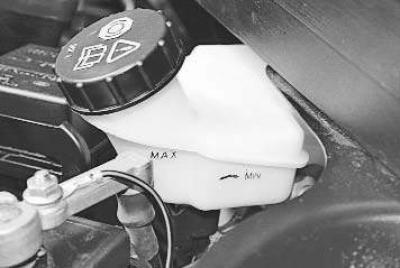
1. Inspect the master cylinder reservoir..
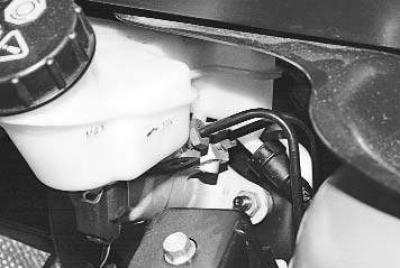
2.... and connections of pipelines and pressure regulators with the main brake cylinder.
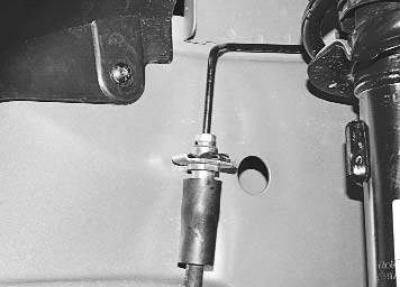
3. Check up, whether there is no leak of a liquid from connections of brake tubes with hoses of forward brake mechanisms.
4. Carefully inspect the brake hoses. Hoses should not have cracks, tears and scuffs. Press the brake pedal all the way down: if swelling appears on the hose, it means that the threads of the hose braid are torn and it must be replaced.
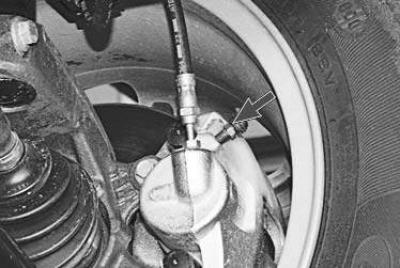
5. Inspect the hose connections to the working cylinders, remove the protective cap and check the front wheel brake bleed valves for leaks.
6. Check up connection of brake pipes with hoses of back brake mechanisms and with couplings.
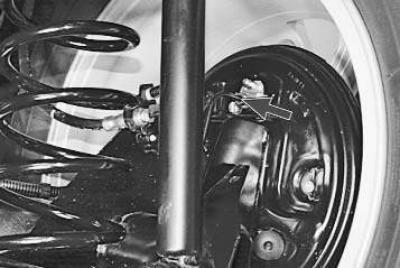
7. Inspect the connection of the brake pipes with the working cylinders of the rear wheels and the air release valves.
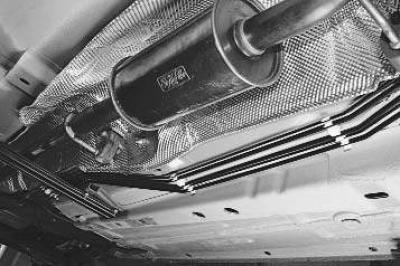
8. Check up fastening of pipelines in holders on the bottom of a body. Replace damaged holders, as their looseness or breakage leads to vibration and, as a result, to breakage of pipelines.
Visitor comments